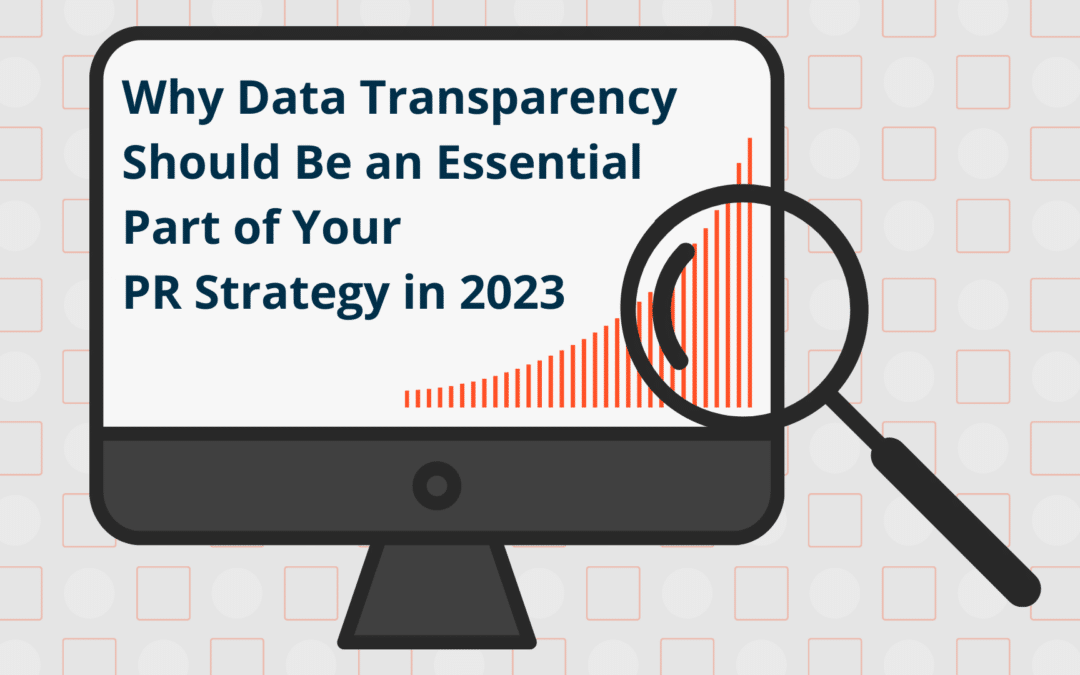Today, brands collect various types of consumer data to help them make more informed decisions. However, several cases of data leaks and breaches from multiple companies in the past have made consumers wary about trusting brands with their data. Additionally, most consumers don’t know what type of data brands collect and how they use it.
If brands want consumers to trust them with their data, they need to embrace data transparency. Data transparency refers to the ethical and lawful collection, storage, and use of consumer data.
It’s about brands being clear with their customers about why they need their data and how they collect, store, protect, and use it. In addition, a brand’s data transparency strategy must also fall in line with data privacy laws and regulations.
Data transparency from a consumer perspective
Due to the rising cases of data leaks and data breaches, consumers are concerned about brands collecting and storing their data. Leaks and breaches put consumers’ data in the wrong hands, often with adverse consequences.
For instance, there have been numerous cases of consumers falling victim to identity thieves and credit card fraudsters following leaks that expose their social security numbers and banking information.
As a result, consumers are skeptical about the types of data that brands collect from them and the safety of this data. They want businesses to be more transparent in their handling of consumer data.
A 2022 Consumer Privacy Survey by Cisco found that:
- Data transparency is the leading factor that can reestablish consumer trust in companies that collect consumer data.
- About 37% of consumers have shied away from companies that need to be more transparent about their data practices.
- 24% of consumers are exercising their Data Subject Access Right to determine the kind of data companies are collecting from them.
From this, it’s clear that consumers are pushing for more control over their personal data and increased transparency from brands.
Data transparency from a brand perspective
From a brand perspective, marketers need to collect as much information as possible from consumers to create personalized experiences for different consumer groups. However, most brands lack transparency when disclosing how they use consumer data.
A poll conducted by KPMG further brings to light the level of mistrust consumers have with companies regarding data transparency. According to the poll:
- 86% of the population is concerned about data privacy, considering that businesses are increasing the amount of personal data they collect from consumers.
- 68% of the population is uncomfortable with the level of data collection by businesses.
- 40% of the population doesn’t trust businesses to use their data ethically.
- 30% of the population is unwilling to share their data with brands.
From this, it’s clear that brands must be more transparent with their data practices if they want to rebuild consumer trust.
Best data transparency practices to implement in 2023
Now that you understand consumers’ views and concerns about data transparency, it’s time to take a proactive approach. Below are four tactics that will help make data transparency an essential part of your PR strategy in 2023.
1. Be open about data collection and use
A primary concern among consumers is the lack of insight into the data brands collect about them and how they use it. Therefore, to build trust with consumers, you need to clarify what data you’re collecting from them and why you’re collecting this data. Many companies are switching to private cloud storage to store customer’s data and ensure it remains protected and safe from hackers.
For instance, if your website uses cookies to track visitors, let these visitors know what information these cookies collect and why you need this information. By doing so, you portray some level of data transparency since you’re not hiding the fact that you’re collecting their data.
2. Allow consumers to decide whether they want to share their data
Providing a disclaimer that your website collects information is the first step toward data transparency. However, you have to keep in mind that not all consumers are willing to share their data. Such consumers may shy away from a website once they realize you’re collecting their data.
To avoid pushing such customers away, you need to go the extra mile and allow them to choose the data they are willing to share. For example, you could allow your site visitors to opt out of third-party cookies while still using essential session cookies to track their activity on your website.
3. Only collect essential data
Consumers are particularly wary about brands collecting more data than they need. For instance, brands claim they collect consumer data to provide more personalized ads and experiences.
However, consumers may not understand why these brands need to collect sensitive information, such as personal and financial data. Such data doesn’t help personalize the consumer’s experience, yet it puts them at risk in the event of a data breach.
Therefore, it would be beneficial for brands to only collect data useful in creating customized marketing and consumer experiences.
Besides, when consumers realize that a brand only collects essential data, they have fewer concerns about sharing it. Additionally, consumers don’t have a problem sharing any data that doesn’t revolve around their personal and financial details.
4. Establish an internal data management process
For brands, a data transparency strategy can only be authentic if it has internal checks and balances regarding consumer data collection, storage, and use. Therefore, it is important to include an internal data management process that controls and regulates the methods and techniques of collecting, storing, and using this data.
One way to do this is to hire a chief compliance officer. A compliance officer can help your brand maintain ethical and legal best practices when handling consumer data. A compliance officer can also help you formulate an internal data management system that ensures the collected consumer data isn’t corrupted or used unethically.
How to make data transparency a part of your PR strategy
Incorporating data transparency into your public relations (PR) strategy is a great way to enhance your brand’s credibility and build consumer trust. Here are two ways your PR department can play a role in spreading the word about your brand’s data transparency.
1. Crisis communication
One way brands fail when it comes to data transparency is through poor or untruthful crisis communication. For instance, when there is a consumer data breach, most brands try to cover up the situation or downplay its severity.
While coming forward and accepting responsibility for a data breach or leak leads to unwanted public scrutiny, it also portrays transparency. On the other hand, concealing information about a data breach — only for consumers to find out about it from other sources — will erode consumer trust in your brand.
Therefore, when you have a data breach or leak, the best approach is to take a transparent and comprehensive crisis communication approach through your brand’s PR department.
After proactively informing consumers about the data leak, you can then highlight the measures you intend to take to better protect their data. Ultimately, spearheading such a crisis portrays your brand as a transparent company that cares about its customers.
2. Incorporating data transparency in PR communication
Besides the marketing department, your PR team is also at the forefront of your brand’s communication with consumers. Therefore, the PR department can also play a part in informing consumers about your brand’s data transparency strategies and what they mean for the consumer.
For instance, when the PR department is formulating news releases or bulletins to consumers, it wouldn’t hurt to mention the company’s dedication and approaches to data transparency when relevant. The inclusion of data transparency information in PR campaigns can help address data-sharing concerns and convince consumers that their data is in safe hands.
As well, the PR department may be able to newsjack relevant media stories on data transparency by offering a trained spokesperson, such as the Chief Compliance Officer, for comment.
Wrapping up
As data becomes increasingly central in our lives and business, it is more important than ever for brands to prioritize data transparency. They must ensure that the data they collect is used ethically and responsibly. They also need to put in place enough measures to prevent this data from falling into the wrong hands.
The data transparencies we’ve covered here will help your brand build trust with consumers while at the same time promoting accountability and data-driven decision-making. By adopting these best practices, brands will not only avoid negative consequences such as data breaches and privacy violations but also unlock the full potential of consumer data to drive innovation and positive impact.









